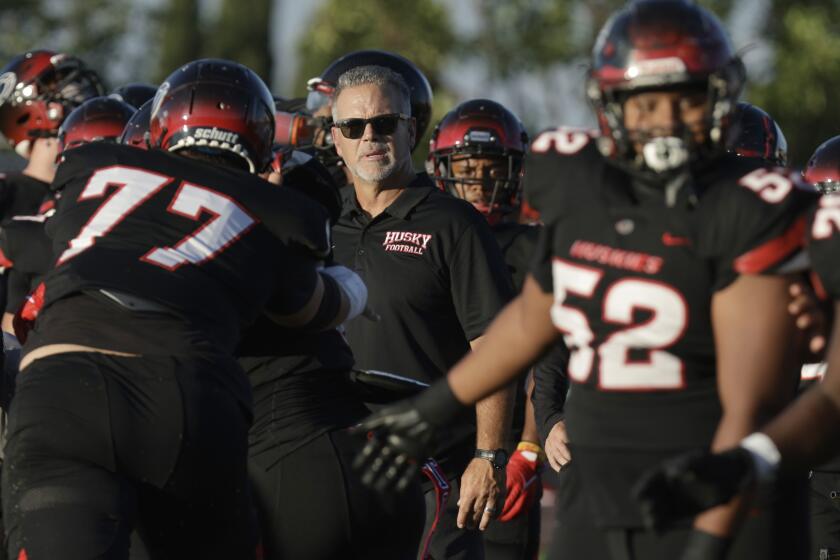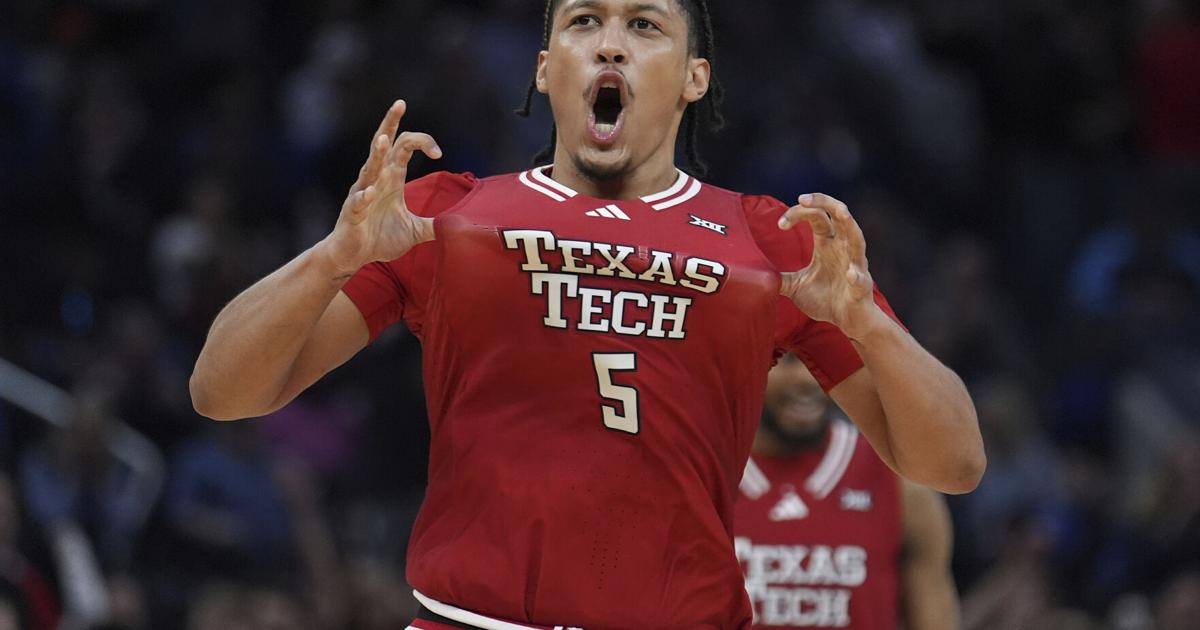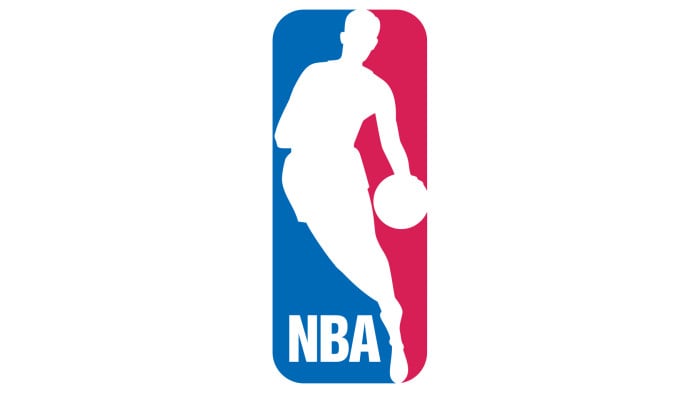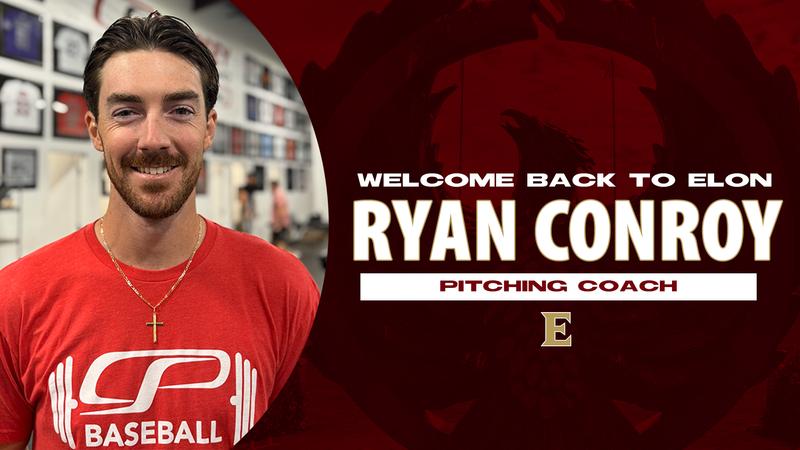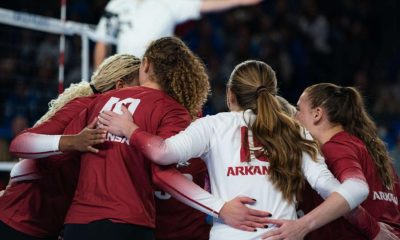Will Wade’s work building N.C. State into an immediate winner included the pursuit of an entrant in the NBA draft, just in case he returned to college.
It wasn’t a huge risk: With all the cash flowing in college, the number of early entrants to the NBA draft has continued to shrink. This year’s draft starts Wednesday night with its lowest total of those prospects in at least 10 years.
kAm“}@H J@F 42? A=2J E96 =@?8 82>6 2 =:EE=6 3:E >@C6[” (256 E@=5 %96 pDD@4:2E65 !C6DD[ C676CC:?8 E@ 9@H 4@==686 A=2J6CD 42? =@@< 2E E96:C 7FEFC6D] “{@@<[ x 42? 86E A2:5 E96 D2>6 x H@F=5 86E A2:5 
kAmp?5 >@C6 >@?6J 
kAmxE’D 366? 7@FC J62CD D:?46 4@==686 2E9=6E6D k2 9C67lQ9EEADi^^2A?6HD]4@>^2CE:4=6^=2HD\DA@CED\e73`_362c`fe24e2h`a`bg46f7_2fec6QmH6C6 A6C>:EE65 E@ AC@7:E @77 E96 FD6 @7 E96:C ?2>6[ :>286 2?5 =:<6?6DD W}x{Xk^2m[ @A6?:?8 E96 5@@C 7@C 2E9=6E6 4@>A6?D2E:@? E92E H2D @?46 7@C3:556? 3J }rpp CF=6D] }6IE H66<[ @? yF=J `[ >2C
kAmu@C (256[ E92E =65 E@ D:8?:?8 %6I2D %649’D s2CC:@? (:==:2>D 27E6C acfDA@CED’ 7:7E9\C2?<65 EC2?D76C H:E95C6H 7C@> E96 5C27E]k^Am
kAm“q2D:42==J ?@H :7 J@F’C6 2? 62C=J 6?ECJ 2?5 J@F’C6 ?@E 2 E@A\a_[ E@A\aa A:4< — H96C6 E96 >@?6J D=@ED — J@F 42? AC6EEJ >F49 >2<6 E92E 
kAmxE’D 2== A2CE @7 2 D6:D>:4 492?86 E92E 92D C:AA=65 E9C@F89 4@==686 2E9=6E:4D D:?46 E96 A2?56>:4[ :ED :>A24E E@F49:?8 E96 }qp] !=2J6CD H:==:?8 E@ “E6DE E96 H2E6CD” 
kAmp?5 :E D9@HD 
kAm“(:E9 2== E96 >@?6J E92E’D 36:?8 E9C@H? 2C@F?5 
k9bms64=:?:?8 ?F>36C @7 62C=J 6?EC2?EDk^9bm
kAm%9:D J62C’D 5C@A 

kAmqFE E9@D6 ?F>36CD 925 72==6? 2D E9@D6 7:G6\J62C A=2J6CD 4J4=65 @FE @7 4@==686 32D<6E32==[ 2?5 E96J’C6 ?@H 36=@H AC6\A2?56>:4 =6G6=D] %92E 564=:?6 4@:?4:56D H:E9 }x{’D yF=J a_a` 2CC:G2=[ 7C@> k2 9C67lQ9EEADi^^2A?6HD]4@>^2CE:4=6^?32\=:76DEJ=6\DA@CED\7@@E32==\4@==686\7@@E32==\eh4hd`hec44aah6h_`gea44`f_g2b3h`Qm2E9=6E6D 5@:?8 A2:5 2AA62C2?46D @C D@4:2=\>65:2 6?5@CD6>6?EDk^2m E@ 3@@DE6CD k2 9C67lQ9EEADi^^2A?6HD]4@>^2CE:4=6^?:=\4@==64E:G6D\325e52ac6_bfca452h7536ee53e246hdQm7@C>:?8 4@==64E:G6D @776C:?8 }x{ A24<286D 2>@F?E:?8 E@ 56 724E@ D2=2C:6Dk^2m]k^Am
kAmpD 2 C6DF=Eik^Am
kAm— t:89EJ\EH@ A=2J6CD 2AA62C65 @? E96 }qp’D =:DE @7 62C=J 6?EC2?ED AC:>2C:=J 7C@> p>6C:42? 4@==686D H:E9 2 D>2EE6C:?8 @7 @E96C E62>D[ 5@H? chT 7C@> a_ac W`eaX 2?5 ?62C=J cfT 4@>A2C65 E@ E96 7@FC\J62C 2G6C286 7C@> a_`e\`h W`db]dXk^Am
kAm— %9:CEJ\EH@ C6>2:?65 27E6C H:E95C2H2= 5625=:?6D[ 5@H? 7C@> ea =2DE J62C 2?5 fa]_ 7C@> a_`e\`hk^Am
kAm— p55:?8 :?E6C?2E:@?2= AC@DA64ED[ `_h A=2J6CD 564=2C65 7@C E96 5C27E[ 5@H? 7C@> a_` =2DE J62C 2?5 a_d]_ 7C@> a_`e\`hk^Am
kAm— p?5 @?=J ce C6>2:?65[ 5@H? 7C@> ff 
k9bm|@C6 4@==686 A=2J6CD H6:89:?8 @AE:@?Dk^9bm
kAmsF<6 4@249 y@? $496J6C F?56CDE2?5D 5C27E 5J?2>:4D[ 3@E9 7@C ?@\5@F3E 9625=:?6CD 2?5 AC@DA64ED 724:?8 =6DD 4=2C:EJ] w6 D66D 4@==686 2E9=6E6 4@>A6?D2E:@? 2D 2 “=68:E:>2E6 82>6492?86C]”k^Am
kAm“w@A67F==J :E 2==@HD A=2J6CD E@ 564:56 H92E’D ECF=J 36DE 7@C E96:C 82>6[” $496J6C E@=5 E96 p!] “xE 2==@HD E96> E@ 2?2=JK6i ‘p> x 24EF2==J C625J 7@C E9:D @C ?@En’ (96C6 >@?6J 5@6D?’E 92G6 E@ 36 E96 564:5:?8 724E@C] q642FD6 :7 >@?6J’D E96 564:5:?8 724E@C[ E92E’D H9J J@F D66 <:5D ?@E DE:4<] %96 }qp’D 4FEE9C@2E] xE ;FDE :D]”k^Am
kAm%96 q=F6 s6G:=D 2C6 6IA64E65 E@ 92G6 E9C66 A=2J6CD D6=64E65 
kAmuC6D9>2? xD2:29 tG2?D — 2 D=6?56C H:?8 H:E9 6IA=@D:G6 D4@C:?8 A@E6?E:2= — H:E95C6H :?DE625 @7 492D:?8 7:CDE\C@F?5 DE2EFD E9C@F89 E96 5C27E AC@46DD] x?4@>:?8 EC2?D76C r65C:4 r@H2C5 7C@> (2D9:?8E@? $E2E6 C2A:5=J C@D6 5C27E 3@2C5D 27E6C E96 4@>3:?6 2?5 C6>2:?65 
kAm“%96C6’D ?@ DF3DE:EFE:?8 E96 >@?6J J@F’C6 8@:?8 E@ >2<6 :7 J@F’C6 2 E@A\`d[ E@A\a_ A:4<[” D2:5 $496J6C[ 6?E6C:?8 *62C c k2 9C67lQ9EEADi^^2A?6HD]4@>^2CE:4=6^>2C49\>25?6DD\7:?2=\7@FC\5F<6\;@?\D496J6C\34f3`__b26`b`34agb`h45f_e2547c22Qm2D DF446DD@C E@ C6E:C65 w2== @7 u2>6C |:<6 zCKJK6HD<:k^2m] “qFE :7 J@F’C6 ?@E D@=:5:7:65 2D 2 7:CDE\C@F?5 A:4<[ H9J C:D< :E H96? J@F 42? 92G6 2 D@=:5 J62C 2?5 2 492?46 E@ 8@ FA @C 36 
k9amr@==686 4@>A6?D2E:@? 
kAm{2?85@?[ 9:>D6=7 2 7@C>6C sF<6 7:CDE\C@F?56C[ D66D E92E 6G@=FE:@?[ E@@]k^Am
kAmw:D !:DE@?D 925 E96:C 7:CDE A=2J@77 2AA62C2?46 D:?46 a_`h[ 3FE =24< 2 7:CDE\C@F?5 D6=64E:@? 2?5 @H? 2 D:?8=6 A:4< 

kAmp44@C5:?8 E@ E96 }qp’D a_ac\ad C@@<:6 D42=6[ 2 A=2J6C 8@:?8 >:5H2J E9C@F89 E96 7:CDE C@F?5 H@F=5 >2<6 C@F89=J Sb]d >:==:@? 
kAmp >:?:>F> 7:CDE\J62C }qp D2=2CJn #@F89=J S`]a >:==:@?]k^Am
kAm“%96D6 }x{ A24<286D 2C6 DE2CE:?8 E@ 86E FA E@ Sb E@ Sc E@ Sd E@ Se >:==:@? 5@==2CD[” {2?85@? D2:5] “%96D6 8FJD 2C6 ?@E 8@:?8 E@ AFE E96:C ?2>6 

k9amrFCC6?E }qp A=2J6CD @776C :?D:89Ek^9am
kAmx?5:2?2 !246CD 3:8 >2? %9@>2D qCJ2?E 2?5 ~<=29@>2 r:EJ %9F?56C 4@F?E6CA2CE xD2:29 w2CE6?DE6:?[ H9@ 3@E9 A=2J65 
kAm%96J H6C6 324<\E@\324< D64@?5\C@F?56CD 

kAmqCJ2?E A=2J65 EH@ 4@==686 D62D@?D 2E x?5:2?2 367@C6 DE:?ED H:E9 7:G6 }qp E62>D[ :?4=F5:?8 s6?G6C’D a_ab 492>A:@?D9:A DBF25] (@F=5 E96 23:=:EJ E@ >2<6 4@==686 >@?6J 92G6 492?865 9:D ;@FC?6Jnk^Am
kAm“%@ 36 9@?6DE[ x D66 :E 7C@> 3@E9 D:56D[” qCJ2?E D2:5] “x7 J@F’C6 ?@E 8@:?8 E@ 86E 5C27E65[ J@F F?56CDE2?5 E92E 2 <:5 ?665D >@?6J E@ =:G6 
kAm“qFE 7@C >6[ x E@@< E96 492?46] x 36E @? >JD6=7[ 2?5 x 36=:6G65 

kAm%96 p>6C:42?\3@C? w2CE6?DE6:? >@G65 E@ v6C>2?J 2E “ 2?5 A=2J65 

kAm“x E9:?< J@F D9@F=5 92G6 E96 C:89E A6@A=6 2C@F?5 J@F E@ <:?5 @7 8F:56 J@F[” D2:5 w2CE6?DE6:?[ 2 ?6H=J >:?E65 }qp 492>A:@?] “x >62?[ x H2D =F4

k9amr@==686 ?@H 42? 36 >@C6 @7 2? 2==FC6k^9am
kAmpE }]r] $E2E6[ (256’D A:E49 E@ (:==:2>D :?4=F565 2 =625:?8 C@=6 2?5 2 D9@E 2E 3@@DE:?8 9:D 5C27E DE@4<]k^Am
kAm%96 e\7@@E\e ;F?:@C 2G6C2865 `d]` A@:?ED H:E9 k2 9C67lQ9EEADi^^2A?6HD]4@>^2CE:4=6^>2C49\>25?6DD\2C<2?D2D\E6I2D\E649\D4@C6\cg6f67`a2cdd336b4d4ee4263ag4_42dQm>F=E:A=6 3:8 }rpp %@FC?2>6?E A6C7@C>2?46Dk^2m 2D E96 #65 #2:56CD C624965 E96 t=:E6 t:89E[ k2 9C67lQ9EEADi^^2A?6HD]4@>^2CE:4=6^>2C49\>25?6DD\E6I2D\E649\7=@C:52\D4@C6\b2d527faa___5ff“ghf3daeabd5d2h7Qm?62C=J 362E:?8 6G6?EF2= 492>A:@? u=@C:52k^2m]k^Am
kAm“w6 H2D >@DE =:<6=J 8@:?8 E@ 36 2 D64@?5\C@F?5 5C27E A:4<[ 2?5 9:D A24<286 96C6 
kAm%92E’D ?@E E@ D2J :E’D 62DJ 2E E96 4@==686 =6G6= 

kAm“xE’D E96 H2J =:76 H@C
kAm}@C D9@F=5 96[ ?@E H:E9 E96 2==FC6 @7 42>AFD =:76 E96D6 52JD]k^Am
kAmp! q2D<6E32== (C:E6C %:> #6J?@=5D 2?5 p! $A@CED (C:E6C {2CCJ {286 4@?EC:3FE65 E@ E9:D C6A@CE]k^Am
kAmp! }qpi k2 9C67lQ9EEADi^^2A?6HD]4@>^9F3^?32Qm9EEADi^^2A?6HD]4@>^?32k^2mk^Am

